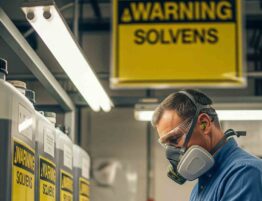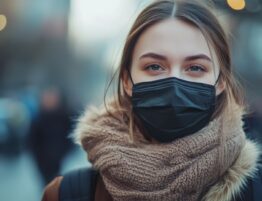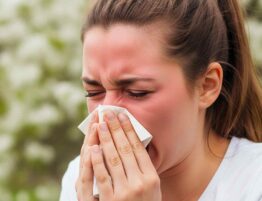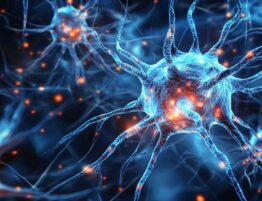A stye is a painful red bump on the eyelid. It can be an irritating and uncomfortable condition. Fortunately, most of them are harmless. They can clear up on their own within 7-14 days. However, there are some steps you can take to soothe stress and speed up the healing.
Our guide will provide you with:
- Effective home meds.
- Hygiene tips.
- Info on when to look for med attention.
We’ll explore:
- The pros of compresses.
- The importance of clean hands.
- The symptoms that show you must consult a doctor.
Understand what stye on the eye is, its causes and treatment. Then, you can effectively manage this ailment and experience relief.
What Causes a Stye
It’s essentially a localized infection of an oil gland at the base of an eyelash. It occurs when bacteria become trapped and multiply within this gland. What causes stye on the eye? Several factors can lead to this unpleasant condition:
- Poor Hygiene. Not washing hands before touching the eye area can introduce bacteria that lead to infection.
- Makeup and Contact Lenses. Badly cleaned makeup tools or contact lenses can harbor bacteria. It increases the risk. It’s crucial to remove makeup completely before bed and to follow proper contact lens hygiene.
- Blepharitis. This inflammation can create an environment that is susceptible to bacterial growth.
- Impaired Oil Gland Function. Age, underlying medical conditions, or certain medications can affect the normal functioning of oil glands. It makes them more prone to blockage and infection.
- Weakened Immune System. Those with compromised immune systems may be more susceptible to infections.
While stye on the eye can be irritating and uncomfortable, it’s generally benign and tends to resolve on its own. However, if you feel a persistent or recurrent problem, it’s advisable to seek evaluation from an eye healthcare professional. It’s to rule out any underlying conditions.
How to Treat a Stye
It is a painful red bump that develops on the edge of your eyelid. It occurs when an oil gland becomes infected. It’s usually harmless. However, it can be irritating and uncomfortable. Fortunately, there are several effective home meds and over-the-counter cures. They’re to help alleviate symptoms and promote healing.
How to Treat Stye on the Eye: Home Meds:
- Warm Compress. Apply a warm compress to the affected area several times a day. It can help soften the area and encourage drainage. Soak a clean cloth in warm water, wring out excess water, and gently place it on an eye.
- Good Hygiene. Avoid touching your eye or the affected area with dirty hands. Wash your hands thoroughly before and after touching your face. Change pillowcases and towels frequently.
- Over-the-Counter Meds. Over-the-counter eye drops or ointments containing artificial tears can help soothe irritation and keep the area moist.
Most infections clear up on their own within a week or two. However, it’s essential to consult a healthcare professional for treatment of styes on the eye if:
- The issue becomes increasingly painful or swollen.
- You develop symptoms of a more serious infection, such as fever, chills, or vision changes.
- The issue doesn’t improve after a week of home treatment.
A doctor may prescribe antibiotic ointment or oral antibiotics for severe cases. They can also perform a minor procedure to drain the infection if necessary.
Recognizing the Symptoms of a Stye
It’s a common inflammation resulting from a blocked oil gland. Characterized by discomfort and redness, it usually isn’t serious but can be bothersome. What are stye on the eye signs? Let’s take a closer look at them in the next blocks.
A Red, Painful Lump on the Edge of the Eyelid
The hallmark is a tender, red bump emerging on the eyelid’s margin. As the condition progresses, this lump may enlarge and intensify in pain. Its appearance can mimic a pimple, but unlike acne, a stye is an infection within an oil gland.
Swollen, Sore Eyelid
Accompanying the red bump, the area often becomes swollen and sore. The degree of swelling can vary significantly, potentially affecting the entire eyelid. It’s crucial to resist the urge to touch or rub the affected area, as this can aggravate the inflammation and increase the risk of infection spread.
Increased Tearing
Excessive tearing is another frequent sign. The eye’s natural defense mechanism responds to irritation by producing more tears. This can lead to watery eyes and a sensation of dryness or grittiness. While uncomfortable, increased tearing is usually a temporary sign. It subsides as the infection heals.
Gritty or Irritated Feeling in the Eye
A gritty or irritated sensation within the area is a common thing what causes stye on the eye. This discomfort often arises from the inflammation and swelling. Blinking may exacerbate the irritation.
It’s essential to remember that while these symptoms are indicative, they can also be associated with other eye conditions. Persistent or worsening symptoms warrant a consultation with a healthcare professional. It’s for an accurate diagnosis and appropriate treatment plan.
Beyond the core symptoms, you may feel light sensitivity (photophobia) or a feeling of a foreign body in the eye. In some cases, an infection can develop into a chalazion, a non-painful cyst within the eyelid.
While both stye and chalazia are eyelid bumps, they differ in several ways. A stye is typically painful, red, and filled with pus, while a chalazion is usually painless, white, and filled with a thick, oily substance.
Understanding the symptoms and how to treat stye on the eye is crucial. It’s for early identification and proper management. If you suspect you have a stye, practicing good hygiene, applying warm compresses, and avoiding irritants can often help alleviate discomfort and promote healing. However, if symptoms worsen or persist, seeking professional med advice is essential.
Preventing a Stye
Preventing involves a combination of good hygiene practices and mindful eye care. Adhere to these tips. Then, you can cut your risk of feeling discomfort and inconvenience.
Hygiene:
- Handwashing. This fundamental practice remains crucial. Wash your hands thoroughly with soap and water. It’s especially before touching your face or eyes. This simple act can effectively deter the spread of bacteria that can lead to an infection.
- Facial Cleansing. Regular facial cleansing is essential as a treatment of styes on the eye. Use it to remove dirt, oil, and makeup that can clog pores and contribute to the development of an infection. Use a gentle cleanser suitable for your skin type and remove all traces of cosmetics before bedtime.
- Linen Hygiene. Regularly launder your pillowcases, towels, and washcloths to prevent the buildup of bacteria. These items come into direct contact with your face and eyes. It makes them potential breeding grounds for microorganisms.
- Contact Lens Care. If you wear contact lenses, meticulous care is essential. Always wash and dry your hands before handling lenses. Follow your eye healthcare professional’s guidelines for lens cleaning, storage, and replacement. It’s to minimize the risk of infection.
Stye on the Eye: Cultivate Healthy Eye Habits:
- Avoid Touching Your Eyes. Your hands carry numerous bacteria, so resist the urge to rub or touch your eyes. This habit can introduce harmful microorganisms into the delicate eye area.
- Makeup Hygiene. Use clean makeup brushes and applicators, and avoid sharing eye cosmetics with others. Replace old or expired makeup to prevent bacterial growth.
- Warm Compresses. Applying a warm compress to your eyelids can help unclog oil glands, a common cause of infection. This gentle treatment can be incorporated into your daily routine to maintain eyelid health.
- Lid Hygiene. Gently cleansing your eyelids with a mild baby shampoo diluted in warm water can remove excess oil and debris. This practice helps prevent clogged glands and reduces the likelihood of an infection.
- Address Underlying Conditions. Conditions like blepharitis (inflammation of the eyelids) can increase your susceptibility to infections. If you have blepharitis or other eye conditions, work with your eye care provider to manage them effectively.
How to Treat stye on the Eye: Additional Considerations:
- Nutrition. A balanced diet rich in vitamins and antioxidants supports overall health, including eye health.
- Sleep. Adequate sleep is essential for bodily functions, including the immune system. Getting enough rest helps maintain your body’s natural defenses against infections.
- Avoid Irritants. Protect your eyes from irritants like smoke, wind, and chlorine. These factors can dry out the eyes and create a more conducive environment for bacterial growth.
Incorporate these preventive measures into your daily routine. Then, you can significantly reduce your chances of developing an infection. Remember, consistency is key. If you experience persistent eye discomfort or symptoms of a stye, consult an eye healthcare professional for proper diagnosis and treatment.
Your health deserves the best. A trusted healthcare partner is essential for navigating life’s wellness journey. With their expert guidance, advanced knowledge, and unwavering dedication, you can confidently expect accurate diagnoses, effective treatment, and a higher quality of life. Building a strong doctor-patient relationship empowers you to make informed decisions.













Please, leave your review
Write a comment: